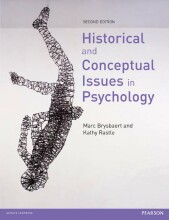R assignment
13 important questions on R assignment
When fitting a rasch model, what is the conditional log likelihood conditional on?
- The conditional log-likelihood in the context of fitting a Rasch model is conditional on the responses of individuals to specific items in a measurement instrument or test.
- The conditional log-likelihood is a function used to estimate the parameters of the Rasch model (such as the item difficulty and the person's ability) based on the observed responses to the test items.
- The estimation process seeks to maximize this conditional log-likelihood by adjusting the model's parameters, resulting in the best fit of the model to the observed data.
How can you get the difficulties from the rasch model?
- Rasch_model$betapar gives you the easiness parameters.
- don't use $etapar, this gives you one parameter too little.
- to transform into difficulty type:
- -Rasch_model$betapar
How can you test whether the rasch model is invariant across another variable? (test whether there is measurement invariance)
- if this test is significant, there is measurement invariance violation
- Higher grades + faster learning
- Never study anything twice
- 100% sure, 100% understanding
If there is a measurement invariance violation, how can you test which items cause this?
- if the p-value of an item is significant, then this item is a source of misfit.
- remove one item at a time and redo the LR test to see when it turns insignificant.
- you should correct for multiple testing in this case.
If the Rasch model is not invariant across gender, does that mean that the
items that show misfit are bad?
he presence of misfit in items when the Rasch model is not invariant across
gender does not necessarily imply that those items are inherently “bad”. Because, misfit can be a result of the differentiation in the item functioning like the items may work differently for different gender groups. However, we have to keep in mind that these items may not measure the underlying trait equally well across genders.
How can you get the person parameters from a rasch model?
Explain the main theoretical difference between the Rasch model and a 2PL
model.
The main theoretical difference between the Rasch model and the 2PL mode is that the 2PL model relaxes the assumption of a constant slope parameter of 1 and instead estimates a discrimination parameter for each item.
How can you obtain the item parameters for the 2pl model?
coef(pl_2)[,1] for difficulty
coef(pl_2)[,2] for discrimination
How can you test whether a rasch model is better than a 2pl model for your data?
- fit a rasch model with ltm package otherwise you can't compare them.
- a likelihood ratio test can be done between nested models.
- if the aic/bic of the 2pl model are lower than those of the rasch model, the 2pl model is still a better fit to the data even after correction for complexity
- if this is the case, the items do not have equal discrimination parameters.
When comparing two models via likelihood ratio, what are the null- and alternative hypotheses and how can you interpret the test?
- Null hypothesis: the more flexible 2PL model does not fit the data significantly better than the Rasch model.
- Alternative hypothesis: the more flexible 2PL model does fit the data significantly better than the Rasch model.
- Outcome: if the p-value is significant, and the AIC and BIC statistics are lower for 2PL than for Rasch model. Then, the 2PL model fits the data better than the Rasch model.
How can you plot the icc's for the grm?
plot(grm, type = "OCCu") # gives operation characteristic curves
How can you obtain the person parameters for new data from a trained grm model?
factors$score.dat$z1
How can you interpret the parameters of a graded response model?
- The item difficulties indicate how 'hard' each answer option is. The difficulty of an answer option indicates the theta value at which 50% of individuals would pick this.
- The discrimination parameter indicates how well the item distinguishes between individuals with different levels of the latent trait. Higher values of discrimination indicate that the item is better at discriminating between individuals with different abilities. It tells you the slope of the irf, the steeper the slope the better an item distinguishes between individuals.
The question on the page originate from the summary of the following study material:
- A unique study and practice tool
- Never study anything twice again
- Get the grades you hope for
- 100% sure, 100% understanding
































